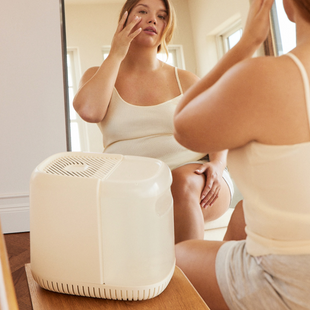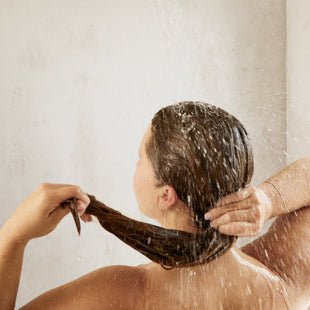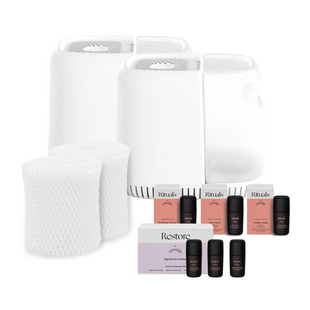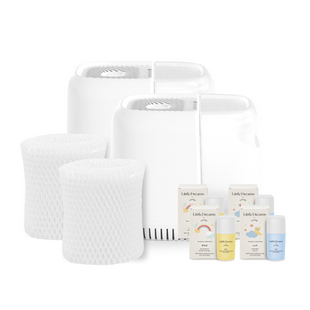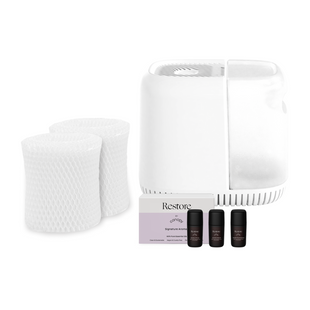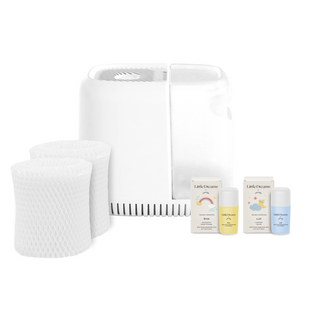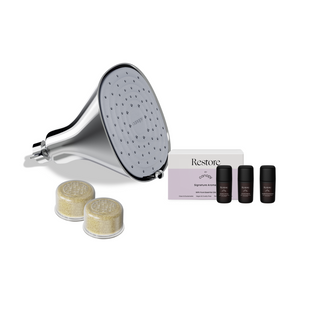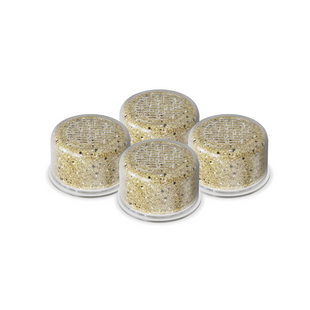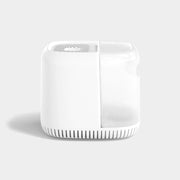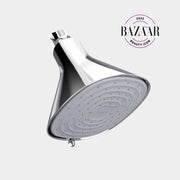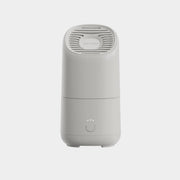This content has been reviewed and updated on May 3, 2024.
Whether you live in a cozy apartment or a multi-story family home, the goal is to make your space as comfortable as possible. Living in a dry environment and breathing in unclean air can make you feel sluggish and under the weather—two concerns that definitely put a damper on your comfort.
Luckily, you can take steps to address these issues by running a humidifier or air purifier. But which is best for your current situation? Read on to learn the difference between air purifiers and humidifiers and discover when you should reach for each device.
What's the Difference Between a Humidifier and an Air Purifier?
You are not alone if you often confuse air purifiers with humidifiers and vice versa. The mix-up could stem from both devices playing a role in improving air quality.
What to Know About Humidifiers
A humidifier can be a lifesaver during the dry fall and winter months if you live in a four-season part of the country. The devices release water vapor into the air, increasing a room's moisture levels or "humidity" to the optimal 40% to 60% range. However, not all humidifiers accomplish this goal in the same way.

Evaporative humidifiers help hydrate larger rooms and more than one space at a time. The humidifier draws in air, which is then filtered through a moistened wick by a fan. The moisture from the wick is released into the air as water droplets.
An ultrasonic humidifier, on the other hand, contains a metal diaphragm. When the metal diaphragm vibrates, the water inside the humidifier's reservoir also vibrates. The movement separates the liquid into droplets, which an internal fan pushes into the air.
A steam-based humidifier boils water to create a warm mist, which is released via an internal fan. This steam-based technology can be dangerous in homes with children and pets.
The Canopy Bedside Humidifier hydrates up to 500 square feet. Water in the attached tank filters through UV light to prevent mold and bacteria growth. The clean water is absorbed through a wood pulp filter and evaporated by the internal fan to release mist-free hydration into the air.
The Nursery Humidifier is another mist- and vapor-free solution to help little ones sleep better at night. It works similarly to the Bedside Humidifier and hydrates up to 500 square feet, but it includes the Little Dreams Aroma Kit. The soothing fragrances aid an infant's comfort. The Large Room Humidifier hydrates up to 1,000 square feet and uses the same technology as the Bedside and Nursery humidifiers. The Portable Humidifier differs from the other devices in the Canopy collection. It does not contain a filter and releases a light, fine mist into the air to help you cool off and balance moisture levels.
All About Air Purifiers
What Affects Indoor Air Quality?
Although hard to detect with the naked eye, various airborne allergens and contaminants could lurk inside your home. For instance, if you have a pet, their dander can cling to surfaces. Exposure can cause a runny nose, cough, watery eyes, and other cold-like symptoms if you are allergic to the tiny flecks of animal skin.
Not having a pet doesn't mean you're in the clear. Dust mites can still be an issue even in the tidiest homes. Dust mites live in carpeting and bedding and feast on dead skin cells. They might be to blame for nasal congestion, sinus pressure, itchy eyes, and trouble breathing.

Pollen is another culprit that negatively impacts indoor air quality. The powdery substance can filter in through open windows and doors and stick to the bottom of shoes. You might notice you feel unwell in late winter or early spring when tree pollen counts are high, in late spring and summer when grass pollen is prevalent, or in late summer and autumn during weed pollen season.
Sure, closing the windows and taking off your shoes at the front door are two ways to keep pollen outside, but the allergen can still get in through fireplace flues, cracks in window sills, and gaps in door frames. Although pollen is one allergen that isn't generated inside your home, plenty of health-harming substances are. Oil, gas, kerosene, and coal particles enter the air when you use the stove and oven or start a fire in the fireplace.
Your home's ventilation could be behind your air quality woes, too. When your home is sealed airtight, dirty air can't exit your home. Similarly, fresh outdoor air can't enter.
How an Air Purifier Can Help
Now that you know what virtually invisible, health-harming allergens and pollutants are inside your home, you might have some idea why an air purifier is a sound investment. As the name suggests, the device purifies (or cleans) indoor air so you can breathe easier in your space.
Air purifiers use built-in fans to draw dirty air into the device. Once inside, the dirty air passes through filters. The filters trap pet dander, dust mites, and other allergens and pollutants. The clean air then exits the device to recirculate in living spaces.
Which air purifier is right for you depends on numerous factors. First, consider what contaminants are polluting the air. Air purifiers with HEPA (high-efficiency particulate absorbing) filters can trap pollen, dust mites, pet dander, mold spores, and other substances 0.3 microns or larger. Air purifiers containing activated carbon filters trap substances a HEPA filter can't, including gasses, odors, tobacco smoke, and volatile organic compounds (VOCs).
A portable air purifier cleans the air in one room. To ensure it can do its job, place it in a location with excellent airflow. The device should also be near the source of concern. For instance, if dander is a problem, place the air purifier near your pet's bedding or play area.
Air Purifier vs Humidifier: When to Use Each Device
As discussed, humidifiers release moisture into the air and air purifiers remove allergens and pollutants. Although each serves a different function, it doesn't mean you can't use both simultaneously.
An air purifier cleans the air but can also make it feel drier. Running a humidifier at the same time can combat the dryness. Using both devices can also be beneficial when the weather triggers allergy symptoms. The moisture a humidifier introduces into the air can weigh down pollen, dust, and other allergens, so they fall to the ground. An air purifier can capture the allergens to ensure they don't recirculate in the air.
An air purifier and humidifier can work together to help you feel better. An air purifier removes the contaminants that cause nose and throat irritation. A humidifier then works to ease inflammation of nasal passage tissue and the throat. The moisture also helps thin out and loosen mucus to reduce nasal congestion. Suppose exposure to airborne irritants causes eczema flare-ups and other skin problems. An air purifier will eliminate the irritant, while a humidifier moistens the skin to prevent itchiness and discomfort.
If adding moisture to a room is your only concern, use a humidifier on its own. You can also use a hygrometer to determine whether humidity levels have dropped below 40%. If cleaning the air is your only concern, use an air purifier.
Canopy devices offer the best of both worlds, with a unique filtration system that removes impurities from water as it evaporates before they become airborne. And the run-dry feature helps eliminate the risk of mold and mildew spores, leaving you with clean, hydrated air.

